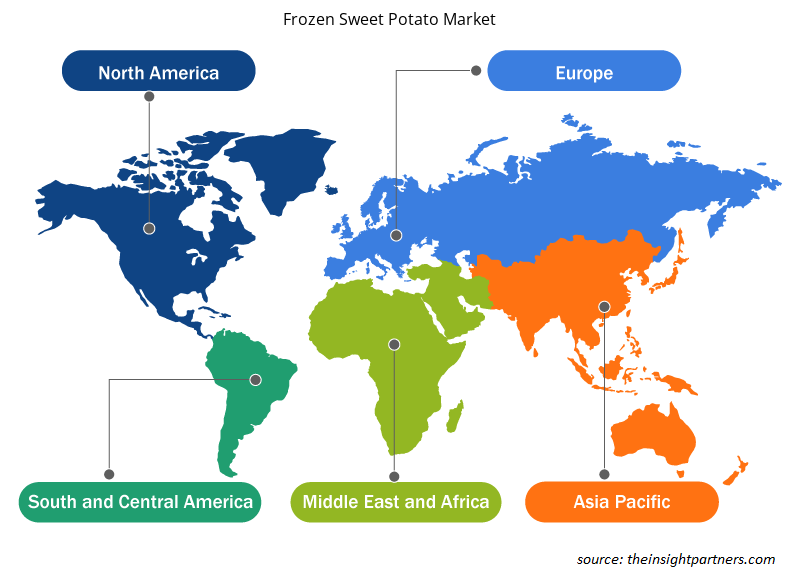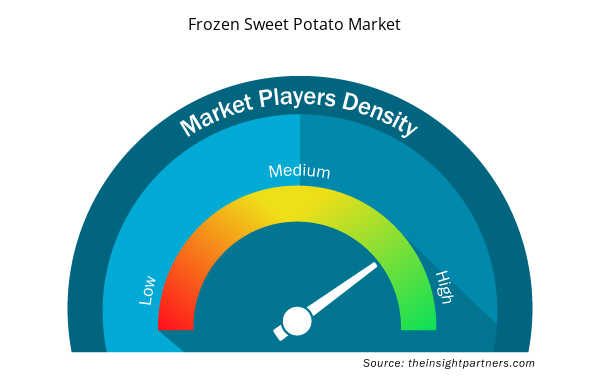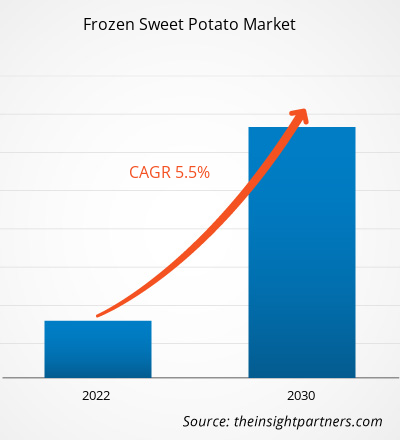[研究报告] 冷冻红薯市场规模估计为 2022 年为 39.825 亿美元,预计到 2030 年将达到 61.0537 亿美元;预计2022 年至 2030 年市场复合年增长率为 5.5%。
市场洞察和分析师观点:
冷冻红薯制品提供了一种方便而多功能的选择,可将这些营养丰富的根类蔬菜融入一顿饭中。无论是炸薯条、薯块、薯饼还是其他产品,这些冷冻产品都为寻求健康饮食的忙碌人士提供了省时的解决方案。人们生活方式的改变和繁忙的工作日程推动了对方便食品的需求。人们正在转向为他们提供便利并帮助他们节省时间的产品。这些因素推动了对冷冻食品的需求。冷冻食品在家中很容易准备,无需花费时间。此外,它具有较长的保质期并且易于储存。冷冻红薯因其多样的风味和酥脆的质地而成为年轻人口和儿童中流行的零食。因此,对冷冻食品的不断增长的需求和冷冻红薯制品的日益普及推动了市场增长。
增长动力和挑战:
电子商务的出现导致人们购物和购买食品的方式发生了巨大变化。智能手机和互联网的普及率不断提高、新兴技术的快速获取、购买力的不断提高以及在线零售购物平台提供的便利是推动电子商务发展的关键因素。人们越来越喜欢在线零售平台购买冷冻食品。根据美国冷冻食品协会的数据,2020 年冷冻食品(包括冷冻零食)的在线销售额增长了 75%。在 COVID-19 疫情期间,由于实体店关闭以及全球各国政府实施多项社会限制措施,食品和饮料的在线销售额大幅增长。随着电子商务在多个地区的普及率不断提高,Conagra Brands Inc、McCain Foods Ltd 和Aviko BV等冷冻食品制造商也通过亚马逊、特易购和其他知名电子商务平台销售产品,增强了其在线业务。电子商务平台的日益普及正在消除对线下零售店的依赖。因此,预计在预测期内,通过电子商务平台销售的冷冻零食销量不断增长将为冷冻红薯市场规模的增长创造丰厚的机会。
冷链物流对于全球冷冻红薯业务的精简运作和普及至关重要。然而,这两个地区的一些发展中国家仍然缺乏冷链基础设施,无法向消费者提供安全的冷冻食品。虽然冷冻食品保质期很长,但如果在处理、运输和储存过程中没有在指定的低温下储存,它们的浪费是不可避免的,从而导致产品受到污染。因此,发展中国家缺乏冷链基础设施导致冷冻食品浪费的风险阻碍了冷冻红薯市场的增长。
定制此报告以满足您的需求
您可以免费定制任何报告,包括本报告的部分内容、国家级分析、Excel 数据包,以及为初创企业和大学提供优惠和折扣
- 获取此报告的关键市场趋势。这个免费样品将包括数据分析,从市场趋势到估计和预测。
报告细分和范围:
全球冷冻红薯市场分析根据类型、类别、最终用户和地理位置进行分类。根据类型,市场细分为炸薯条、薯块和薯饼、薯角、薯饼等。就类别而言,市场分为有机和传统。就最终用户而言,市场分为食品服务和食品零售。按地域划分,市场大致分为北美、欧洲、亚太地区 (APAC)、中东和非洲 (MEA) 以及南美洲和中美洲。北美市场进一步细分为美国、加拿大和墨西哥。欧洲市场细分为德国、法国、英国、意大利、西班牙和欧洲其他地区。亚太地区市场进一步细分为中国、印度、日本、澳大利亚、韩国和亚太其他地区。MEA 市场细分为南非、沙特阿拉伯、阿联酋和 MEA 其他地区。南美洲和中美洲市场进一步分为巴西、阿根廷和南美洲和中美洲其他地区。
节段分析
根据类别,冷冻红薯市场规模分为传统和有机。传统部分占据了冷冻红薯市场的很大份额,预计有机部分在预测期内将大幅增长。有机冷冻红薯产品是使用有机收获的红薯生产的。冷冻红薯的需求归因于消费者对更健康、更环保的食品选择的日益增长的偏好。有机产品被认为不含合成农药和化学品,这与人们对合成化学品相关健康问题的认识不断提高相一致。消费者越来越多地寻找既方便又有营养的产品。
区域分析:
在所有主要地区中,北美在 2022 年占据了冷冻红薯市场的主导地位。2022 年该地区的市场价值为 12.4095 亿美元。欧洲是全球市场的第二大贡献者,约占冷冻红薯市场份额的 29%。北美冷冻红薯市场的趋势归因于红薯消费量的增加、对方便食品的需求增加、产品推广的举措增加以及对健康食品的兴趣日益浓厚。北美红薯市场在过去几年中大幅增长,未来还将继续增长。
行业发展和未来机遇:
以下列出了冷冻红薯市场主要参与者采取的各种举措:
- 2022年3月,KUK宣布在阿联酋迪拜推出冷冻红薯片,旨在扩大其产品组合和消费者群。
冷冻红薯市场区域洞察
Insight Partners 的分析师已详细解释了预测期内影响冷冻红薯市场的区域趋势和因素。本节还讨论了北美、欧洲、亚太地区、中东和非洲以及南美和中美洲的冷冻红薯市场细分和地理位置。

- 获取冷冻红薯市场的区域具体数据
冷冻红薯市场报告范围
| 报告属性 | 细节 |
|---|---|
| 2022 年市场规模 | 39.825亿美元 |
| 2030 年的市场规模 | 61.0537亿美元 |
| 全球复合年增长率(2022 - 2030 年) | 5.5% |
| 史料 | 2020-2022 |
| 预测期 | 2022-2030 |
| 涵盖的领域 | 按类型
|
| 覆盖地区和国家 | 北美
|
| 市场领导者和主要公司简介 |
|
冷冻红薯市场参与者密度:了解其对业务动态的影响
冷冻红薯市场正在快速增长,这得益于终端用户需求的不断增长,而这些需求又源于消费者偏好的不断变化、技术进步以及对产品优势的认识不断提高等因素。随着需求的增加,企业正在扩大其产品范围,进行创新以满足消费者的需求,并利用新兴趋势,从而进一步推动市场增长。
市场参与者密度是指在特定市场或行业内运营的企业或公司的分布情况。它表明在给定市场空间中,相对于其规模或总市场价值,有多少竞争对手(市场参与者)存在。
在冷冻红薯市场运营的主要公司有:
- 康尼格拉品牌公司
- Ardo 食品公司
- 艾维克公司
- 伯德斯艾克有限公司
- Lamb Weston 控股公司
免责声明:上面列出的公司没有按照任何特定顺序排列。

- 获取冷冻红薯市场顶级关键参与者概述
COVID-19 影响:
COVID-19 疫情影响了北美、欧洲、亚太地区 (APAC)、南美和中美 (SAM) 以及中东和非洲 (MEA) 等多个国家的几乎所有行业。在 COVID-19 疫情期间,由于供应链中断和生产工厂关闭,包括食品和饮料在内的各个行业都遭受了严重破坏。许多企业宣布产品交付可能延迟,未来销售下滑。因此,各个行业的停工阻碍了 2020 年冷冻红薯市场的增长。
相反,COVID-19 疫情改变了全球消费者的偏好,因为健康成为他们的首要任务。人们对健康零食的偏好以及对含有有机成分的产品的需求都在增加。这一因素引发了对冷冻红薯的需求。然而,严重的分销网络中断和企业停工导致全球供需缺口。冷冻红薯市场的制造商面临劳动力短缺,并在采购原材料方面面临挑战,这对他们的盈利能力产生了负面影响。2021 年,各国政府宣布放宽贸易禁令、封锁和企业停工等限制。制造商被允许满负荷运转,这有助于他们克服供需缺口。此外,随着疫苗的推出,市场出现复苏,这对冷冻红薯市场有利。
竞争格局和重点公司:
Conagra Brands Inc、Ardo Foods NV、Aviko BV、Birds Eye Ltd、Lamb Weston Holdings Inc、Le Duc Fine Food BV、McCain Foods Ltd、Mondial Foods BV、Handy Food Innovation Ltd 和 Sunbulah Food & Fine Pastries Manufacturing Co Ltd 是全球冷冻红薯市场报告中排名前十的公司。这些公司专注于开发有机产品,预计未来几年将为市场提供新的机会。
- 历史分析(2 年)、基准年、预测(7 年)及复合年增长率
- PEST 和 SWOT 分析
- 市场规模价值/数量 - 全球、区域、国家
- 行业和竞争格局
- Excel 数据集



Report Coverage
Revenue forecast, Company Analysis, Industry landscape, Growth factors, and Trends

Segment Covered
This text is related
to segments covered.

Regional Scope
North America, Europe, Asia Pacific, Middle East & Africa, South & Central America

Country Scope
This text is related
to country scope.
常见问题
Based on the distribution channel, the food service segment accounted for the largest revenue share. In recent years, the demand for different types of frozen sweet potato products has increased from hotels, quick service restaurants (QSRs), and fast-food chains. The frozen sweet potato products offer convenience to chefs and food service establishments, allowing for easy incorporation into various dishes without the time-consuming process of peeling and chopping fresh sweet potatoes.
The major players operating in the global frozen sweet potato market include Conagra Brands Inc, Ardo Foods NV, Aviko BV, Birds Eye Ltd, Lamb Weston Holdings Inc, Le Duc Fine Food BV, McCain Foods Ltd, Mondial Foods BV, Handy Food Innovation Ltd, and Sunbulah Food & Fine Pastries Manufacturing Co Ltd, among others.
North America market dominated the frozen sweet potato market and continues to be the largest segment by 2028. The largest share of North America can be attributed to increasing awareness regarding healthy snacking products and surge in strategic initiatives from manufacturers for variety of product launch.
The rising demand for frozen snacks and strategic initiatives by key market players are major factors driving the growth of global frozen sweet potato market.
Increasing demand for healthy alternatives to conventional snacking items is expected to provide lucrative growth opportunities to the global frozen sweet potato market during the forecast period.
Trends and growth analysis reports related to Food and Beverages : READ MORE..
The List of Companies - Frozen Sweet Potato Market
- Conagra Brands Inc
- Ardo Foods NV
- Aviko BV
- Birds Eye Ltd
- Lamb Weston Holdings Inc
- Le Duc Fine Food BV
- McCain Foods Ltd
- Mondial Foods BV
- Handy Food Innovation Ltd
- Sunbulah Food & Fine Pastries Manufacturing Co Ltd
The Insight Partners performs research in 4 major stages: Data Collection & Secondary Research, Primary Research, Data Analysis and Data Triangulation & Final Review.
- Data Collection and Secondary Research:
As a market research and consulting firm operating from a decade, we have published and advised several client across the globe. First step for any study will start with an assessment of currently available data and insights from existing reports. Further, historical and current market information is collected from Investor Presentations, Annual Reports, SEC Filings, etc., and other information related to company’s performance and market positioning are gathered from Paid Databases (Factiva, Hoovers, and Reuters) and various other publications available in public domain.
Several associations trade associates, technical forums, institutes, societies and organization are accessed to gain technical as well as market related insights through their publications such as research papers, blogs and press releases related to the studies are referred to get cues about the market. Further, white papers, journals, magazines, and other news articles published in last 3 years are scrutinized and analyzed to understand the current market trends.
- Primary Research:
The primarily interview analysis comprise of data obtained from industry participants interview and answers to survey questions gathered by in-house primary team.
For primary research, interviews are conducted with industry experts/CEOs/Marketing Managers/VPs/Subject Matter Experts from both demand and supply side to get a 360-degree view of the market. The primary team conducts several interviews based on the complexity of the markets to understand the various market trends and dynamics which makes research more credible and precise.
A typical research interview fulfils the following functions:
- Provides first-hand information on the market size, market trends, growth trends, competitive landscape, and outlook
- Validates and strengthens in-house secondary research findings
- Develops the analysis team’s expertise and market understanding
Primary research involves email interactions and telephone interviews for each market, category, segment, and sub-segment across geographies. The participants who typically take part in such a process include, but are not limited to:
- Industry participants: VPs, business development managers, market intelligence managers and national sales managers
- Outside experts: Valuation experts, research analysts and key opinion leaders specializing in the electronics and semiconductor industry.
Below is the breakup of our primary respondents by company, designation, and region:

Once we receive the confirmation from primary research sources or primary respondents, we finalize the base year market estimation and forecast the data as per the macroeconomic and microeconomic factors assessed during data collection.
- Data Analysis:
Once data is validated through both secondary as well as primary respondents, we finalize the market estimations by hypothesis formulation and factor analysis at regional and country level.
- Macro-Economic Factor Analysis:
We analyse macroeconomic indicators such the gross domestic product (GDP), increase in the demand for goods and services across industries, technological advancement, regional economic growth, governmental policies, the influence of COVID-19, PEST analysis, and other aspects. This analysis aids in setting benchmarks for various nations/regions and approximating market splits. Additionally, the general trend of the aforementioned components aid in determining the market's development possibilities.
- Country Level Data:
Various factors that are especially aligned to the country are taken into account to determine the market size for a certain area and country, including the presence of vendors, such as headquarters and offices, the country's GDP, demand patterns, and industry growth. To comprehend the market dynamics for the nation, a number of growth variables, inhibitors, application areas, and current market trends are researched. The aforementioned elements aid in determining the country's overall market's growth potential.
- Company Profile:
The “Table of Contents” is formulated by listing and analyzing more than 25 - 30 companies operating in the market ecosystem across geographies. However, we profile only 10 companies as a standard practice in our syndicate reports. These 10 companies comprise leading, emerging, and regional players. Nonetheless, our analysis is not restricted to the 10 listed companies, we also analyze other companies present in the market to develop a holistic view and understand the prevailing trends. The “Company Profiles” section in the report covers key facts, business description, products & services, financial information, SWOT analysis, and key developments. The financial information presented is extracted from the annual reports and official documents of the publicly listed companies. Upon collecting the information for the sections of respective companies, we verify them via various primary sources and then compile the data in respective company profiles. The company level information helps us in deriving the base number as well as in forecasting the market size.
- Developing Base Number:
Aggregation of sales statistics (2020-2022) and macro-economic factor, and other secondary and primary research insights are utilized to arrive at base number and related market shares for 2022. The data gaps are identified in this step and relevant market data is analyzed, collected from paid primary interviews or databases. On finalizing the base year market size, forecasts are developed on the basis of macro-economic, industry and market growth factors and company level analysis.
- Data Triangulation and Final Review:
The market findings and base year market size calculations are validated from supply as well as demand side. Demand side validations are based on macro-economic factor analysis and benchmarks for respective regions and countries. In case of supply side validations, revenues of major companies are estimated (in case not available) based on industry benchmark, approximate number of employees, product portfolio, and primary interviews revenues are gathered. Further revenue from target product/service segment is assessed to avoid overshooting of market statistics. In case of heavy deviations between supply and demand side values, all thes steps are repeated to achieve synchronization.
We follow an iterative model, wherein we share our research findings with Subject Matter Experts (SME’s) and Key Opinion Leaders (KOLs) until consensus view of the market is not formulated – this model negates any drastic deviation in the opinions of experts. Only validated and universally acceptable research findings are quoted in our reports.
We have important check points that we use to validate our research findings – which we call – data triangulation, where we validate the information, we generate from secondary sources with primary interviews and then we re-validate with our internal data bases and Subject matter experts. This comprehensive model enables us to deliver high quality, reliable data in shortest possible time.


 获取此报告的免费样本
获取此报告的免费样本